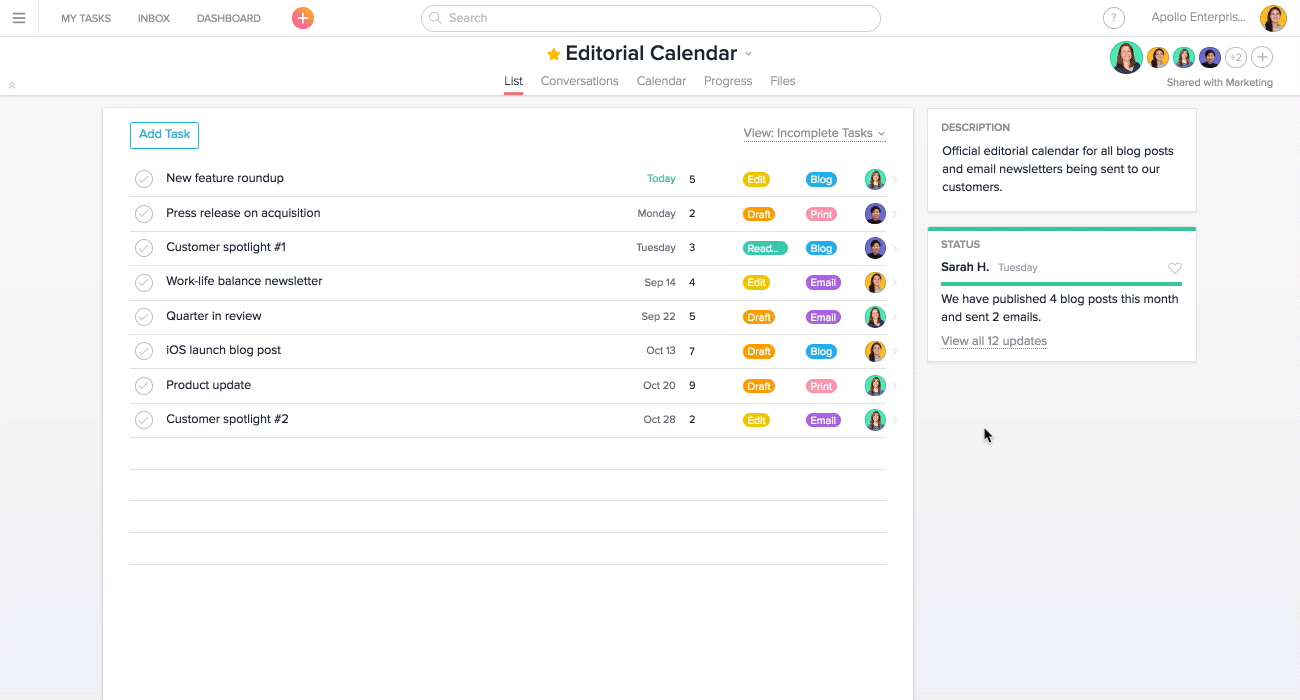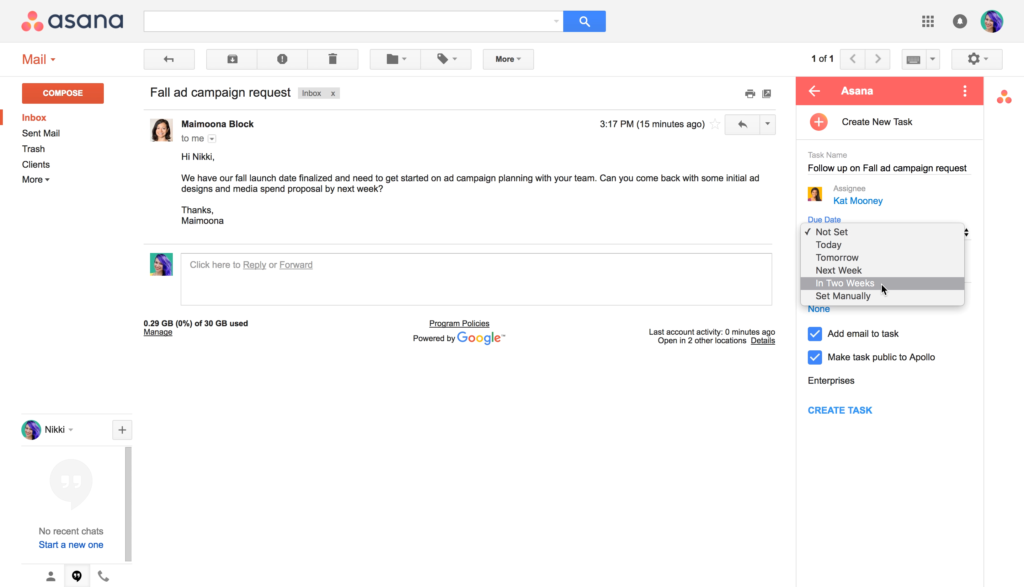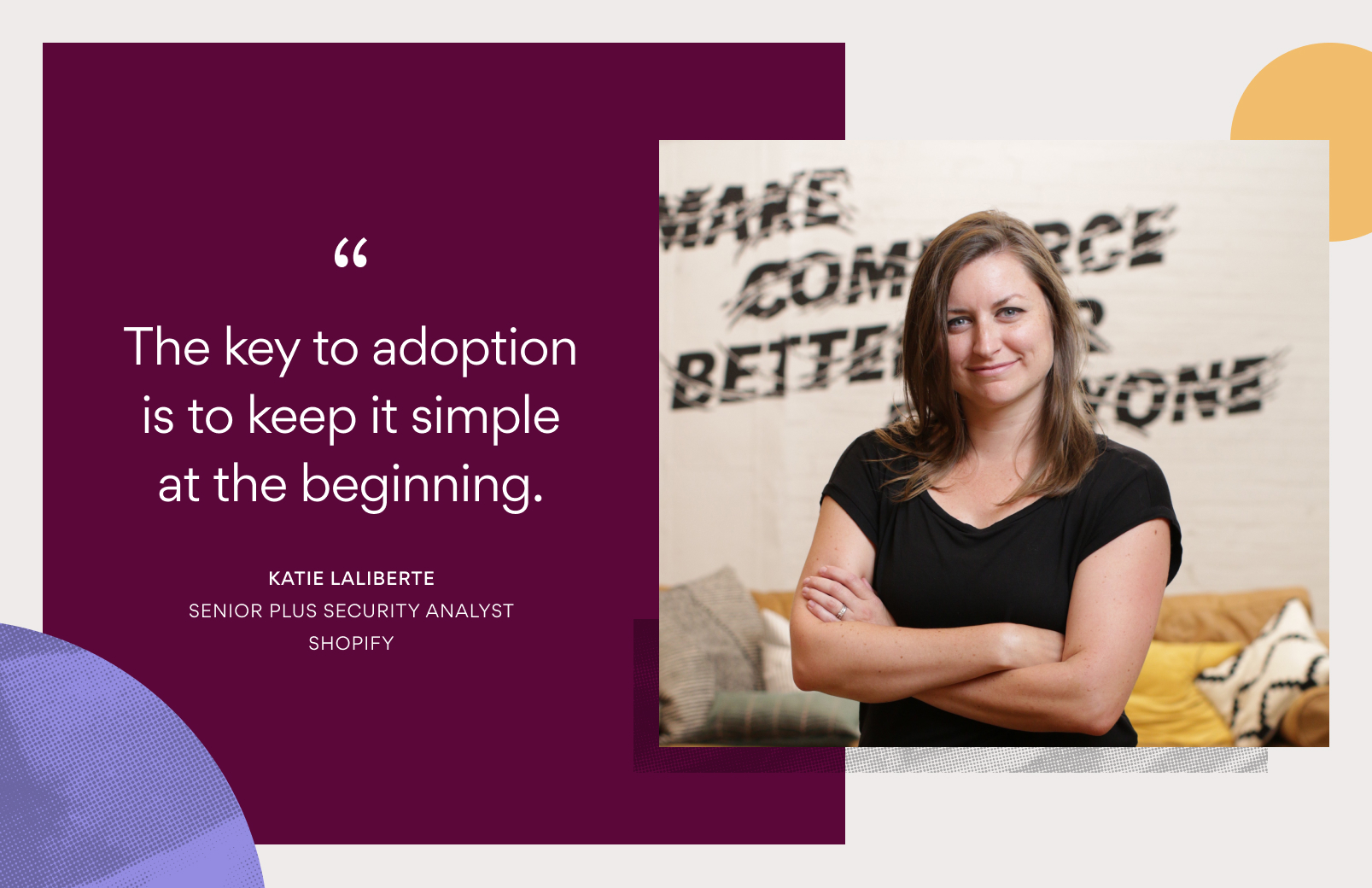Why we struggle with cross-team collaboration and what to do about it

Given the amount of technology built to improve team communication, collaboration across teams should be easier than ever. We can instantly contact coworkers with Slack. We can share documents across the globe with Google Drive. We can assign tasks and collaborate on projects in Asana. However, introducing new software to your team isn’t always enough. You likely have other, more interpersonal, barriers to overcome as well.
At InVision, for example, collaboration tools play a key role in coordinating work between the product and marketing teams. However, they also emphasize the importance of constant communication, clear delegation of responsibilities, and company-wide knowledge of upcoming product launches. All of these ingredients feed into their ability to successfully collaborate across multiple teams—and their marketing campaigns are stronger for it.
When you lack of clarity of purpose, it becomes apparent when you try to break out of your silo to collaborate—and then hit a wall.
Learning to collaborate with team members in different departments can unlock opportunities for companies to do their best possible work. So why do we fight it? And why do we have a hard time facilitating it even when we all agree we want it? Below, you’ll find 5 common barriers to collaboration across teams, departments, and functions—along with solutions for each.
5 tips to improve collaboration across teams
Put simply, cross-functional collaboration is when people from different teams or functions (marketing, sales, engineering, HR) within a company join forces to work on a common goal, project, or responsibility.
It can be anything from day-to-day responsibilities, like customer support and marketing teaming up on social media, to one-off projects, like sales and product developing a new, customer-converting feature. However, making it happen—not to mention making it work work—isn’t always easy.
1. The teams involved have conflicting goals—or no goals at all
Have you ever tried to involve another team in a project, only to hear them say “that’s not a priority for us”? It can feel maddening if you know it will directly impact revenue, gain a significant number of new customers, fix a huge technical debt, or otherwise positively impact your business.
In this case, you and the team at hand likely lack alignment on goals. Or worse, you don’t know the goals of your team or company.
When you lack clarity of purpose, it becomes apparent when you try to break out of your silo to collaborate—and then hit a wall.
Solution: align on goals and share them with everyone
Encourage senior leaders to make your company goals publicly visible so everyone, not just the leadership team, knows your company’s priorities. If you’re an individual contributor, make sure you know how your projects ladder up to broader goals (you can use the pyramid of clarity to help map this out) and communicate which goal your initiative supports with collaborators.

If you’re using Asana, create a project that lists out all of your company goals and objectives. Share it with your entire company so that every team—from accounting to sales—understands the bigger picture. You can use comment-only access to make sure it’s visible, but not editable, by everyone. For more detailed instructions, read our Help Center article on creating a company goals and milestones project in Asana.
2. You’re not aware of other teams’ projects and initiatives
Some of the best collaborations I’ve worked on started when another co-worker turned to me and said, “Hey, such-and-such team is working on XYZ. Did you know about that?”
You’ve likely experienced this, too. Organic collaborations are only the tip of the iceberg. Think of how many more opportunities we can uncover by actively communicating our work with each other.
Solution: share upcoming work within and outside your department
Not knowing what your co-workers are doing creates a barrier to effective collaboration, but it doesn’t have to. To solve for this, regularly share a summary of your team’s upcoming work to your entire company or create a place where others can easily discover this information.
Cross-team communication has the potential to unlock some of our best work, to uncover insights we never knew we needed, and to take our project outcomes from decent to exceptional.
Just be mindful of noise. While it’s good to have an idea of what each team in your company is doing, every person doesn’t need to know about every little Tweet, bug fix, or customer support case. Keep your sharing brief but give co-workers a destination they can go to (like an Asana project) if they want to learn more.

In Asana, use status updates to give all of your project followers a quick update on progress and upcoming work. For larger initiatives, create a summary and share it out as a team or staff-wide conversation. Include links to relevant tasks and projects and invite teammates to join a project if they can contribute.
3. You don’t understand your coworkers’ roles, responsibilities, or jargon
Once, I listened to a co-worker give the same update in our weekly team meeting for two months straight. I didn’t think it was relevant to my work. That is, until I saw the final result and realized we had just missed a really good opportunity to collaborate. Had we talked through it in more detail, we could have found ways to reduce duplicate work and shorten her project timeline.
Often, this “missed connection” happens at work because we:
- don’t fully understood the other’s role or responsibilities
- use jargon and nomenclature that’s not easily understood by a broader audience
Fortunately, awareness is the first step to breaking down this barrier.
Solution: learn who does what and how to speak their language
Whenever you can, get to know your co-workers, their working styles, and ask them detailed questions about what they’re working on. In larger companies, facilitate learning opportunities, like random 1-1s or company-wide “show and tells” where people can present things they built, launched, or worked on.
At Asana, we do this by assigning areas of responsibilities (AoRs) to each employee and keeping a running list of all AoRs and their owners. It helps everyone know exactly who does what.
4. Taking on another project seems too time-consuming
This is probably the most common scenario: You invite a team or teammate to collaborate on something with you. They’re interested, but don’t have time. Maybe they agree to help out but “next month” or “next quarter.” Eventually, your project gets pushed back indefinitely and you’ve given up all hopes of it ever getting done.
The problem is, getting involved in a new project often seems like a daunting, time-consuming task —even if it’s actually a much smaller task.
Solution: Present a clear proposal, timeline, and estimated time commitment
Before you even ask your co-worker to help out on a new project, take time to estimate how long the project will take. Buffer in extra time for your project if you can. Then, outline the co-worker’s role and estimated time commitment. If they have a clearer understanding of what you need from them and how long it will take, the barrier to pitching in becomes smaller.

In Asana, create a project and add a description and due dates to tasks. Assign tasks within your project to individual teammates. Then, use custom fields to add an estimated time commitment. When you assign out tasks, your co-workers will have a much clearer understanding of what they need to do, by when, and how long it will take.
5. There’s reluctance to adopt new ways of working
“Habits are your brain’s version of autopilot,” writes Stephanie Vozza on Fast Company. In the workplace, this often translates into reluctance towards adopting a new tool, method, or way of working. It’s the if-it’s-not-broken-why-fix-it mentality. And we all know habits are hard to break.
Unfortunately, staying within our habits ignores opportunities to work more efficiently, save time, and get ahead of the curve. (Just think of the advantage early email adopters had over their email-less counterparts!) And who doesn’t want to get more time in their day?
Solution: Introduce a new tool or habit slowly
If you’re introducing something new—whether it’s a new process or tool—to your team, let people ease into new processes. “What I’ve found is not to push a major process overhaul [when training new people on using Asana],” says Asana community member, Caisha. “Start with a simple project, like a meeting agenda or an event. Ideally it’s something that many people in the department, regardless of focus, will need to know about or be involved in.”
It’s also a good idea to have a point person, or champion, who gently reminds people “Hey, remember that new process we’re following?” Or “Hey, could you put this in Asana?” to help others adopt a new way of working.

If you’re just starting to use Asana with your team, use integrations like the Gmail add-on to help people smoothly transition from communicating via email to collaborating in Asana.
Start collaborating with teammates
With effective collaboration, you can unlock some of your team’s best work, uncover insights you never knew you needed, and take your project outcomes from decent to exceptional. But facilitating collaboration doesn’t come challenge-free. It takes work. It’s up to you to decide if you’re going to let barriers trap you in a silo, or break them down.

